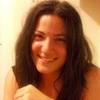Advertisement
Amer Shomali: When I was a little kid in a refugee camp in Syria, I was obsessed with comic books—Tintin, Asterix, all of those superheroes. One day I came across a comic book about Beit Sahour, and for the first time, I'm reading a story where the superheroes could be my family, my cousins. It was a very strange feeling.
Later on, we got a chance to come back to Palestine, but everything was totally different from what I was imagining Palestine would look like. I was thinking it would be a red community where everybody would take care of everybody and share food, and I find it's like every other place on Earth where everybody is obsessed with consumerism and materialist stuff. One day I met one of the characters of the film, and he told me that whatever I imagined about Palestine and Beit Sahour was true but I came at the wrong time, because I missed the whole action, and people changed after Oslo.The only thing that makes it into the media is bombs.
Advertisement
The literal translation of the word intifada means shaking up things, as if you are covered in dust and you are shaking to get rid of the dust. I think the image they have in the States about the intifada comes from the Second intifada, the suicide bombings. During the first intifada there were no suicide bombers. It was mainly a civil disobedience movement, but it wasn't covered by the media so there's no image of it. The only thing that makes it into the media is bombs. But this kind of thing—having cows, planting backyards, not paying taxes—it's not going to be covered.
What were the biggest challenges you faced making this film?A nation who can't make fun of its own wounds will never be able to heal.
Most of the footage about Palestine from that period was shot by international news agencies. They had their agendas: either they showed the Palestinians as victims, as heroes, or as terrorists. None of those agencies will provide you with footage of a Palestinian milking a cow. We intended to make the film specially to portray the Palestinians in a different way, which is the everyday Palestinian, and we had to recreate those parts in drama and animation. That was the main technical challenge.
Advertisement
The comedy came from my background—I draw political cartoons. A nation who can't make fun of its own wounds will never be able to heal.Actually, the first draft of the film's script was quite pessimistic. But when we started shooting, something interesting happened. People would approach and tell us stories that weren't in the script. We would ask if they have someone in their family, maybe a son or a cousin, who looks like they did 20 years ago. Then we would shoot the scene. Once we needed 50 people for a demonstration scene, but we could only afford ten. We put out a call on the radio, and 200 people came. They asked us to put the shooting schedule on Facebook. They started to call, "We see you are planning to shoot in this location, but the [Israeli] army is very close, we advise you to change the shooting schedule and shoot the next scene," and when the army started to move, they would call and say, "OK, you can come."
Advertisement
So they took over the whole film, and for me, that was an indication that the spirit of the intifada was in the film—the minute they saw that they can believe in this film, they jumped back on. I saw I couldn't represent the situation as a hopeless situation. We still have hope.What do you want people to take away from the film?This is becoming a strategy for the Palestinians in our generation: to see that you can stop being a victim and reject being a radical and claim back your future.
I want them to see a different face of Palestinians and a different face of Israel. I want them to have a better understanding of what does it mean to live under occupation. Usually, the maximum Palestinian films ask for is entertainment and sympathy. I want them to have empathy. I want the audience to think, What would I do if I were Palestinian, if I wanted to have a cow and someone prevented me from that? And I want Palestinians to have hope.Nowadays, Palestinians are stuck between two positions: one is to be an absolute victim—of the occupation, of capitalism, of poverty—and to act based on that. The other is to say, "I reject that and I want to be a radical, a bomber." But there is a third option which was the option of the first intifada, where people rejected both those options. They wanted to reclaim their life, their future, and to build their own community away from those two proposed options. This is becoming a strategy for the Palestinians in our generation: to see that you can stop being a victim and reject being a radical and claim back your future.To bring a screening of The Wanted 18 to your local theater, visit the film's website.
